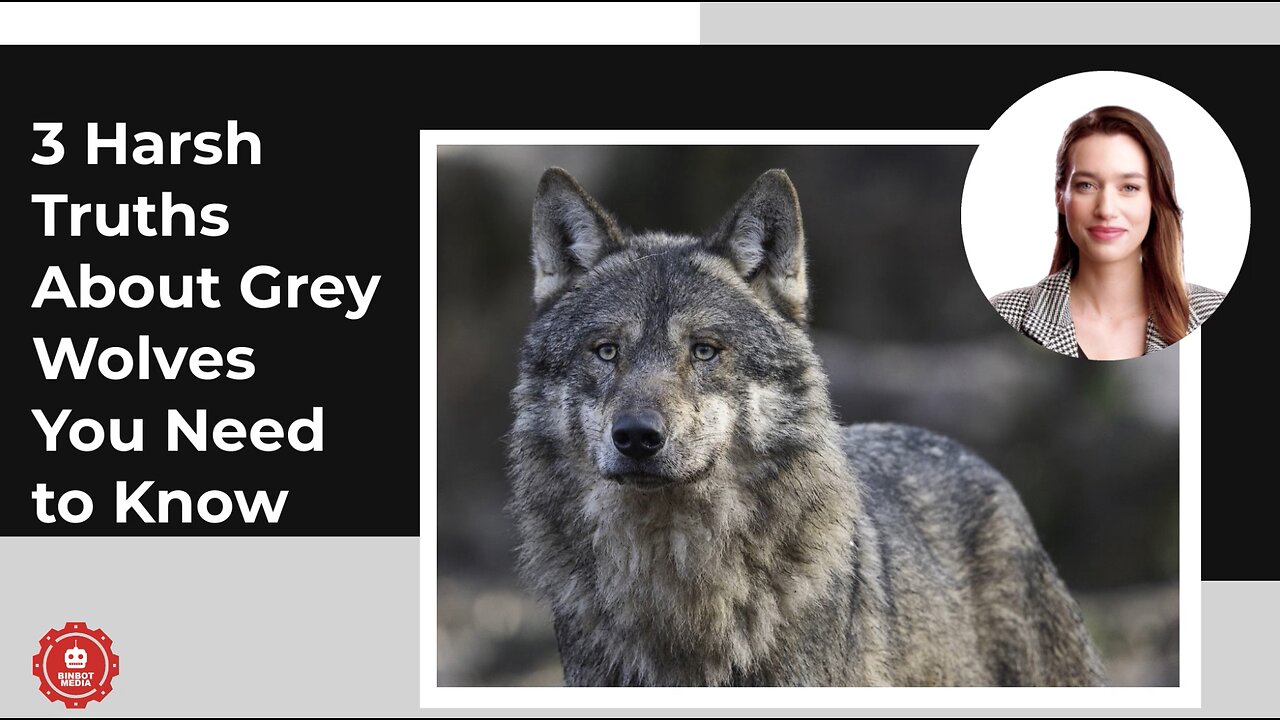Premium Only Content

3 Harsh Truths About Grey Wolves You Need to Know
The grey wolf is a majestic apex predator that plays an important role in the ecosystem. These intelligent and social animals are also among one man’s favorite animal species. Unfortunately, their reputation has been marred by centuries of negative stereotypes and misinformation. Today, many people know little about these magnificent creatures, with some believing improbable myths about them instead of scientific facts. To correct this information gap, here are some harsh truths about grey wolves you need to know.
Grey wolves are not all grey.
The color of a wolf’s coat is related to its habitat and associated prey. The majority of grey wolves have a distinct grey coat, but some subspecies have black, brown, or white fur. In fact, the Mexican grey wolf and the red wolf are mostly reddish-brown in color. Rare black subspecies can be found throughout the world, such as the Tibetan wolf, the Arabian wolf, and the Ethiopian wolf. These color variations are related to different environments and diets. Thus, you cannot use wolf coloration to identify an individual wolf.
The term “alpha” does not refer to a wolf hierarchy.
The term “alpha” is often used in reference to wolf packs, but there is no scientific evidence to support this. In fact, wolf hierarchies are poorly understood and are highly variable between different packs. Additionally, wolf packs don’t have “alpha” wolves but rather an “alpha pair.” In other words, each wolf pack consists of an alpha male and female that keep the rest of the wolves in line. Despite the alpha pair being a long-held misconception, the term has become common in describing wolf packs. Yet, this has also led to more misinformation about grey wolves.
Wolves do not always eat what you may expect.
People often picture wolves as carnivorous animals that are always eager to devour large animals. In reality, wolves are opportunistic feeders that eat what’s readily available in their habitat. In fact, wolves have been known to consume carbohydrates and even plants, such as acorns, berries, insects, and rodents. To supplement their diet, wolves will also occasionally eat carrion. Although they tend to eat large animals, such as elk or bison, wolves don’t always kill their prey. In many cases, wolves will scavenge from the remains of large animals, like a lion or a tiger.
Conclusion
Although the grey wolf is a majestic animal, it has been plagued by myths and stereotypes for centuries. To correct this information gap, here are some harsh truths about grey wolves that you need to know. Grey wolves aren’t all grey, the term “alpha” doesn’t refer to a wolf hierarchy, wolves don’t always eat what you may expect, and humans are responsible for the decline in the grey wolf population.
-
 2:33:36
2:33:36
Badlands Media
9 hours agoOnlyLands Ep. 21: From Trump’s VP Pick to Green Energy Grift
68.3K8 -
 1:07:26
1:07:26
Inverted World Live
12 hours agoThe War Against Robots w/ Joe Allen
98.4K5 -
 6:08:31
6:08:31
SpartakusLIVE
12 hours agoWARZONE NUKE IS BACK?! || Solo Challenge CHAMPION to start, duos w/ the Dawg later
102K1 -
 1:00:18
1:00:18
Man in America
14 hours agoBig Pharma’s Empire of Lies Is COLLAPSING as People Turn to Natural Medicine
65.1K23 -
 7:17:44
7:17:44
Drew Hernandez
16 hours agoGHISLAINE MAXWELL SAYS CLAIMS EPSTEIN WAS INTELLIGENCE ASSET ARE BULLSH*T?!
38K38 -
 29:54
29:54
Afshin Rattansi's Going Underground
23 hours agoUkraine: Prof. Anatol Lieven SLAMS Europe’s ‘BLOODY STUPIDITY’ as Trump Negotiates with Putin
34.7K6 -
 15:27
15:27
robbijan
1 day ago $2.47 earnedThe Emperor’s New Labubu & The Spiritual War Behind Everything
55.3K43 -
 LIVE
LIVE
GritsGG
21 hours ago36 Hour Stream! Most Wins 3420+ 🧠
706 watching -
 2:05:47
2:05:47
TimcastIRL
10 hours agoTrump FBI Raids John Bolton Amid Classified Docs Investigation | Timcast IRL
191K110 -
 2:15:23
2:15:23
TheSaltyCracker
10 hours agoFinally Someone Gets Raided ReEEeStream 8-22-25
95.5K240